The application of ceramics involves every aspect of our lives. Are you curious about advanced ceramic processing? Advanced ceramics are different from traditional clay ceramics. Its processing technology is more complex and requires a lot of equipment and economic investment. Next, we will introduce you to the processing of ceramics in detail through seven steps.
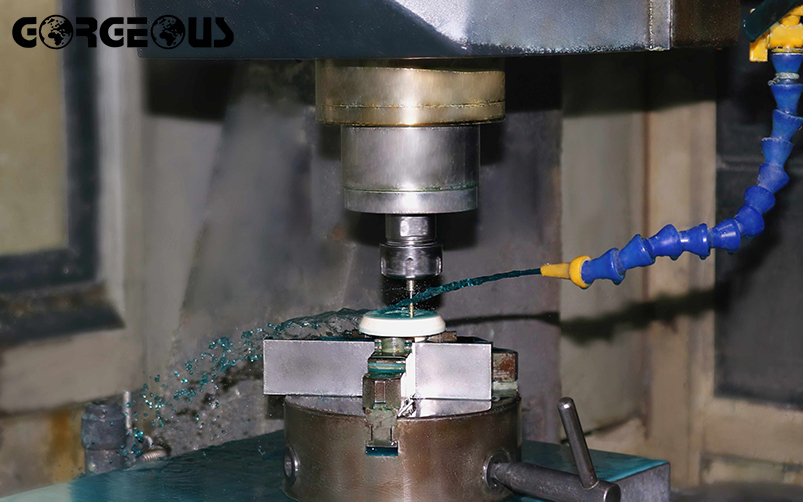
Raw material collection and storage
In order to process high-quality, high-performance advanced ceramics, the collection and storage of raw materials is essential. High-quality oxide raw materials are the basis of ceramic processing. You can choose a reliable raw material supplier to purchase raw materials and store high-purity and impurity-free raw materials in the corresponding equipment containers in a timely manner.
You may wonder, what kind of raw materials are of high quality? How can we prevent the raw materials from being contaminated?
High-quality raw materials require extremely high purity. The purity of various raw materials usually needs to be maintained above 99.9%. When selecting raw materials, you should choose those with no grease, dust or other contaminants attached to the surface.
In order to prevent the raw materials from being contaminated, we give you the following professional suggestions:
- Try to purchase high-quality and pure raw materials, test the purity of the raw materials, and store them in the corresponding containers in time;
- You should ask professionals to regularly clean and maintain storage containers and equipment;
- Operators should wear protective tools such as masks and gloves when storing and accessing the corresponding raw materials to prevent human contamination;
- You need to regularly test the storage status of the raw materials and the storage environment, such as temperature, humidity, gas, and other compound content.
Crushing and milling
This step is to grind and crush high-quality raw materials. By crushing the raw materials, we can better remove impurities in the raw materials and maintain a higher purity of the materials. These oxide powders ground into fine particles by ball mills, milling machines and other equipment are also beneficial to the subsequent manufacturing of ceramics.
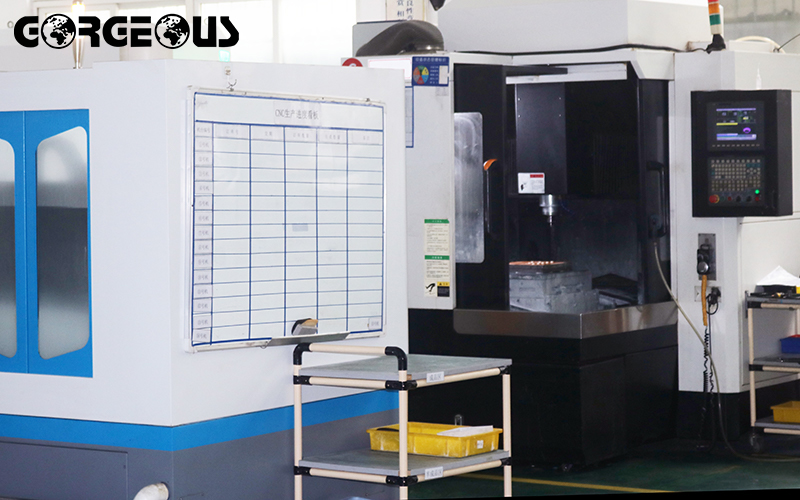
How big is the ceramic powder after grinding? Why is grinding oxide powder into fine particles beneficial for subsequent manufacturing?
After measurement with professional equipment, we can tell you with certainty that the size of finely ground ceramic powder usually reaches the micron (1-10μm) or sub-micron (0.1-1μm) level, and the more high-precision structural ceramics require The smaller the particle size. Powder ground into fine particles has a larger specific surface area, which can increase the contact area between particles, which helps to improve the density of the ceramic during subsequent sintering and reduce the probability of pores inside the ceramic.
Mix
In this step, the powder is mixed with specific binders and plasticizers, and is completed using mixers, high-speed separators and other equipment.
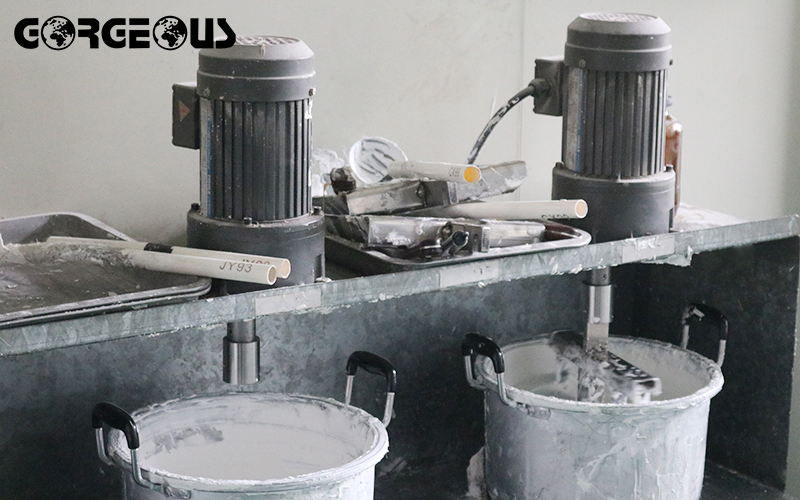
Forming
In ceramic processing, the shaping step is very important, through which you can shape the oxide slurry or powder into a specific shape. Common molding processes include: dry pressing, injection molding, extrusion, isostatic pressing, etc. Each molding method has its own unique advantages.
Different Molding Methods
- Dry pressing molding
This is a method in which ceramic raw materials are placed into a mold and formed using high pressure. It is often used to mold small ceramics with simple shape designs. The advantage of this molding method is that it can be produced in large quantities and the density of the produced ceramics is high. However, dry pressing molding is difficult for ceramics with complex shapes and has higher requirements for ceramic powder particles. If you need to manufacture ceramics with relatively simple shapes in large quantities, we recommend you use this lower-cost molding method.
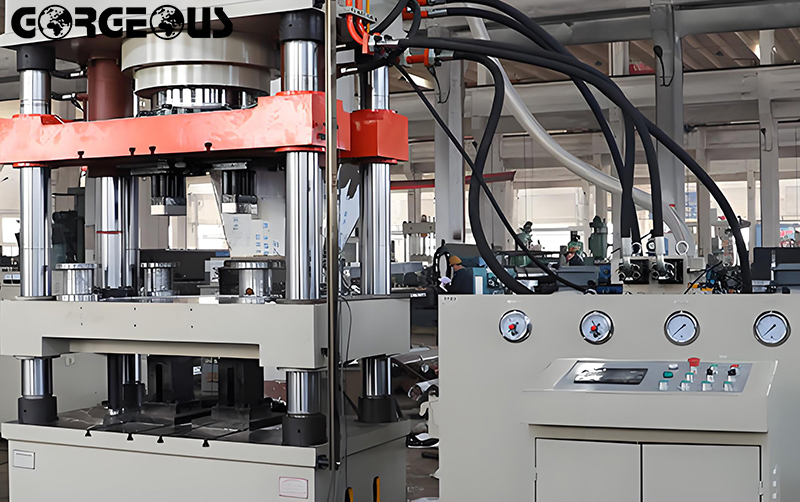
- Injection molding
This molding method requires first mixing ceramic powder with a specific organic binder into a slurry and then pouring it into a mold to cool and form. Since slurry is used, the advantage of this type of molding is that it can produce various ceramic products with complex shapes and high precision, and is also suitable for mass production. However, the disadvantages are also obvious. The mold required is high in cost and a certain technical level is required for the flow of slurry.
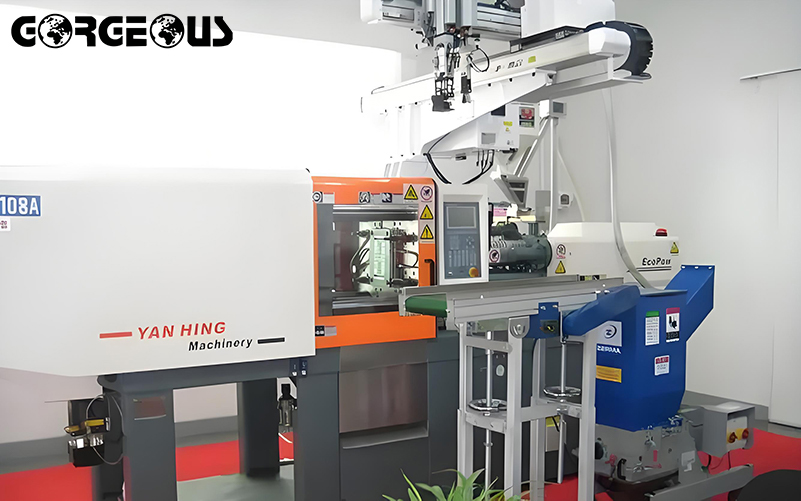
- Extrusion molding
Like injection molding, ceramic powder needs to be made into a specific slurry and extruded through an extruder. This forming method is very suitable for long strips of ceramics, and can be continuously cut and produced with very high efficiency! But the shapes that can be formed are very limited.
- Isostatic pressing molding
Isostatic pressing is suitable for ceramics of various shapes. The ceramics formed in this way have uniform density distribution and precise dimensions. It’s just that isostatic pressing requires a higher technical level and the cost of equipment and molds is also higher, so it is not suitable for mass production.
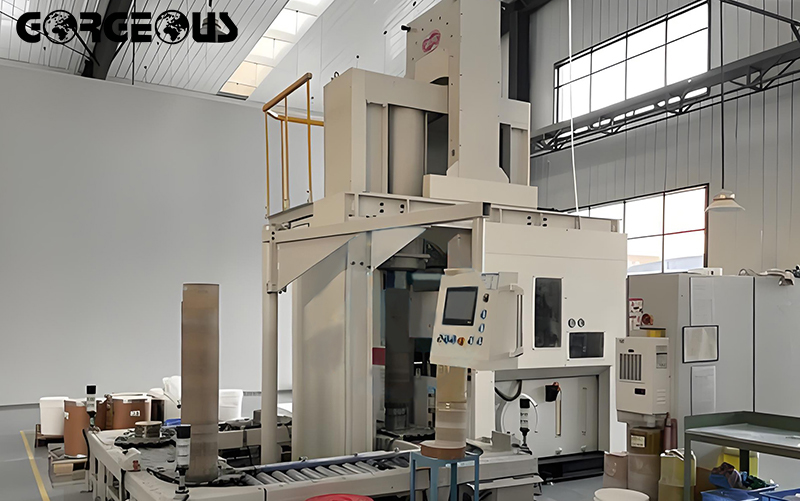
Dry
The formed ceramics still contain some moisture and need to be dried before subsequent sintering.
Glaze
This process is usually carried out before sintering. We can glaze ceramics by spraying and dipping.
Sintering
The sintering process is very important for ceramic processing. If you want to bake perfect ceramics, you need to control the sintering temperature, time, and atmosphere perfectly.
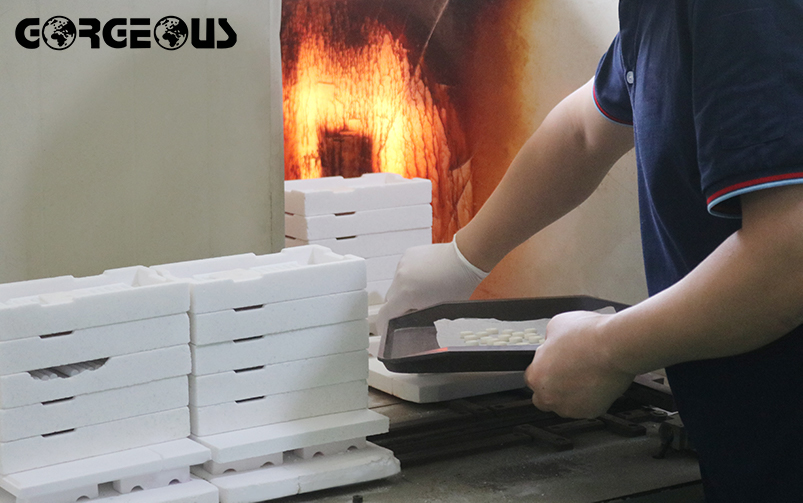
If you are curious about how to sinter perfect ceramics, please read below:
Based on many years of production experience, we explain the key to ceramic sintering in detail from three aspects: temperature, atmosphere, and sintering aids.
- Temperature control.Temperature control is crucial for sintering. If you want to sinter perfect ceramics, you first need to choose a suitable sintering temperature and allow the ceramics to be heated evenly (uneven heating may cause cracks or even cracking in the ceramics)! Different materials adapt to different temperatures. Take the alumina we are most familiar with as an example. The sintering temperature of alumina usually needs to be controlled at around 1600°C. The temperature cannot be higher than the melting point, nor too low. Use the most appropriate temperature. Uniform heating can effectively diffuse and densify the particles on the ceramic surface.
- Choose the right atmosphere.Different materials require different atmospheres to assist during the sintering process. Common oxide ceramics, such as alumina, zirconia, etc., are generally sintered in an atmosphere with sufficient air or oxygen. Ceramics such as nitrides, such as aluminum nitride, need to be sintered in an inert gas to avoid oxidation.
- Add sintering aids.During the sintering process, if some sintering aids and grain boundary modifiers are added in appropriate amounts, it can effectively help the ceramic to increase its density, increase its mechanical properties, and allow the ceramic to complete sintering better.
Summarize
Through the above introduction, you already have a certain understanding of ceramic processing. Advanced ceramics have been widely used with the development of the times, and the manufacturing technologies involved have become increasingly complex. The processing and research and development of advanced ceramics present huge opportunities and challenges.




